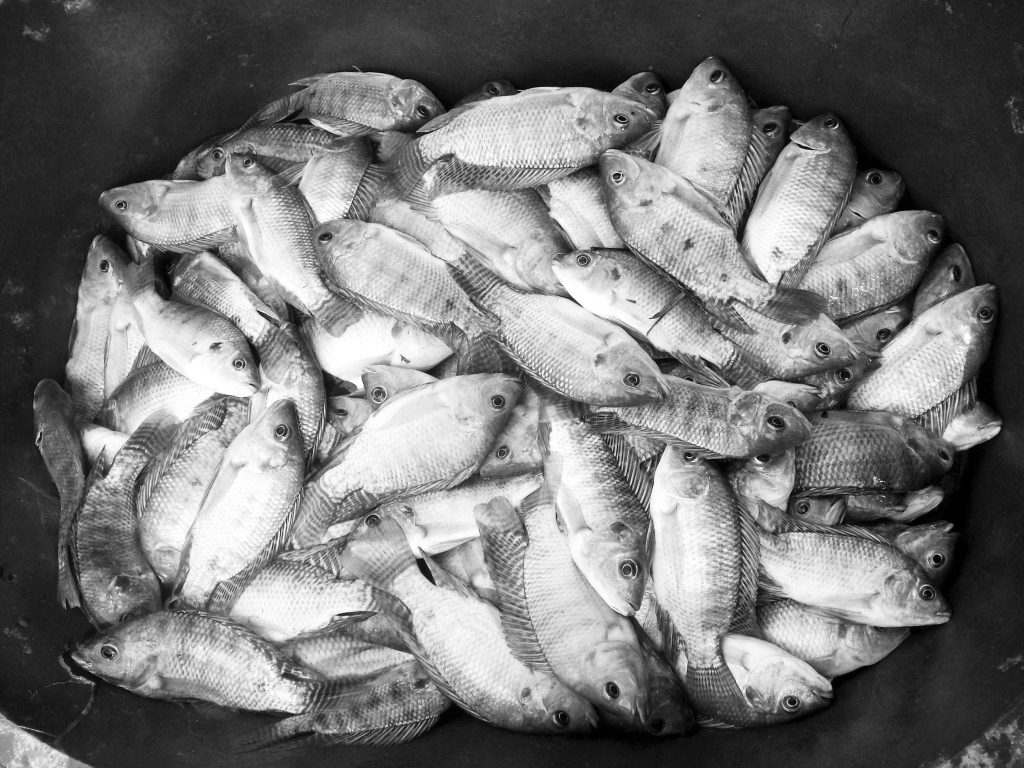(Second of Four Parts)
“We’ve pushed the seas perilously close — and in some cases — past their natural limits. Ingrained wasteful behavior must be overcome if the wealth of the seas is to serve our children.” – Troubled Waters: A Call to Action
***
Unlike rice, which is considered a political commodity, fish are neglected in the media – except only where there is a fish kill. After all, fish are touted as “the last wild meal in the human diet.” As fish are “poor man’s source of protein,” they are not given much thought by researchers.
But the truth is, the Philippines may not have enough fish to feed its ever-growing population, now more than 100 million. For the past years, the country’s municipal and commercial catch of fish have dramatically declined.
Fish provides more than half of the protein requirement of most Filipinos. “Unless we look for other sources of protein, the food intake of Filipinos will be greatly affected,” said Dr. Rafael D. Guerrero III, a fishery expert and national scientist at the National Academy of Science and Technology (NAST).
To solve the fish shortage, the government has to allow imported fish into the local market. “The Philippines will have to import fish sooner or later due to the declining fish catch in the country,” Secretary Proceso Alcala of the Department of Agriculture told a national daily.

The Bureau of Fisheries and Aquatic Resources (BFAR), a line agency of the agriculture department, reported that the population and size of small pelagic fish species such as sardines, galunggong (scad) and matambaka(ox-eye scad) “are already dwindling.”
Roy C. Alimoane, the director of Davao-based Mindanao Baptist Rural Life Center, mourned “the almost unabated plunder” of the commons – unoccupied land and waters that are shared resources for people to use – that has caused fish depletion in the country. “Like the other vital resources such as forests, Philippine fisheries are about to collapse,” he said.
The country’s marine resources are vast – 200 million hectares of coastal and oceanic territorial water area. But sad to say, they are beset with problems.
Too many people and overfishing have been cited as among the top culprits on why fish catch in the country has been declining. Oceans, which are global common property resources, are open with few limitations to all takers. Vessels from wealthier countries dominate the ocean catch.
All fishing activities, however, depend on a fragile resource base which, if mismanaged and overexploited, can easily collapse, fishery experts claim.
The coral reefs, touted to be the rainforests of the sea, are a case in point. In the Philippines, an estimated 10%-15% of the total fisheries come from coral reefs. About 80%-90% of the income of small island communities comes from fisheries.
“Coral reef fish yields range from 20 to 25 metric tons per square kilometer per year for healthy reefs,” says Dr. Angel C. Alcala, former environment secretary and recipient of Ramon Magsaysay Award for public service.
Despite the alarm sounded in the late 1970s by the East West Center in Hawaii, coral reef destruction continues unabated. Coral reefs in the Philippines have been slowly dying over the past 30 years, reported the Southeast Asian Centre of Excellence during the 11th International Coral Reef Symposium held in Fort Lauderdale, Florida in 2008.
Studies have shown that rapid population growth and increasing human pressure on coastal resources have resulted in the massive degradation of coral reefs. Robert Ginsburg, a specialist on coral reefs working with the Rosenstiel School of Marine and Atmospheric Science at the University of Miami, said human beings have a lot to do with the rapid destruction of reefs.
“In areas where people are using the reefs or where there is a large population, there are significant declines in coral reefs,” he pointed out.
Dr. Edgardo D. Gomez, director of the Marine Science Institute of the University of the Philippines at Diliman, agrees. “If asked what the major problem of coral reefs is, my reply would be ‘The pressure of human populations’,” he asserted.
A visit to any fishing village near a reef will quickly confirm this, he pointed out. “There are just too many fishermen. They overfish the reefs, and even if the use non-destructive fishing gear, they still stress the coral reef ecosystem,” Dr. Gomez deplored.
The fishing industry reportedly employs about five percent of the country’s total labor force. Some of those involved in fishing employ illegal methods like using cyanide, dynamite and trawls.
It’s not because of poverty that some of these fishermen resort to destructive fishing methods. “Easy money – that’s why they go into illegal fishing,” said a source, who added that if one fisherman is making big money from his illegal activities, others follow suit.
About 70% of all communities in the country are found along the seaside. Population pressures have been cited as another reason why fishermen harvest marine products exhaustively without even thinking for future. “If other fishermen will catch these fishes, I might as well catch them first,” said a fisherman from Sta. Cruz in Davao del Sur.
About 40 percent of the country’s coral reefs have been obliterated by cyanide fishing. The Haribon Foundation estimated more than 4,000 cyanide-using aquarium fish gatherers in the country; another 2,000 are into live food fish collection. “These fishermen spray some 400,000 kilograms of sodium cyanide on coral reefs every year,” the International Maritime Alliance-Philippines said in a statement.
Like coral reefs, mangroves, which thrive in sheltered tidal flats, coves, bays, and river estuaries, are not spared from denudation. The current rate of mangrove deforestation ranges from 2,000 to 3,000 hectares per year, according to Dr. Guerrero.
Mangroves are very important to marine life, Dr. Guerrero says. They serve as sanctuaries and feeding grounds for fish that nibble on detritus (fallen and decaying leaves) trapped in the vegetation, and on the bark and leaves of living trees.
Mangroves are home to 68 species of fish (including bangus, kitan, tilapia, eel, and mullet, to name a few), 54 species of crustaceans (shrimps, prawns, and crabs), and 56 species of gastropods.

“Fish use the spaces under the mass of prop roots of mangrove trees as ‘delivery rooms,’ and the offspring of many marine species spend their growing period in the mangrove swamps before moving on to the open said,” explains Dr. Guerrero.
Equally important in fisheries are the seagrasses. The Philippines has 18 species along its coasts, making the country with the second highest (after Western Australia’s more than 30 species) in terms of the number of seagrasses in the world. The area covered by seagrasses in the country is 27,282 square kilometers.

Among the diversified species found in the seagrass beds are fishes, sea cucumbers, sea urchins, crabs, scallops, mussels and snails. Shrimps spend the early stages of their lives in seagrass areas. Large animals like sea cow (dugong) and green sea turtles graze extensively in seagrass beds. A total of 1,384 individuals and 55 species from 25 fish families have been identified from five seagrass sites in the country alone.
“All have economic value mostly as food and aquarium specimens,” reports Dr. Miguel D. Fortes, the country’s foremost expert on seagrasses. “Five times as many fish live in seagrass beds as above sea floors of mud, shells, and sand.”
“Despite their high biodiversity and abundance, seagrass habitats are still poorly understood in our country,” says Dr. Fortes. “Hence, it appears only marginally useful when, in fact, the ecosystem plays significant economic and ecological roles.”
“The last wild meal in the human diet” is how fish are considered. In the Philippines, the other sources of meat protein are pork, chicken, and beef. “But those are very expensive,” 33-year-old Jean Arriaga, a mother of two children, complains. “Before, we managed to buy one kilogram of fish every other day. Today, we have managed to at least fish twice a week.”
She’s not alone. Most Filipinos are doing that already. (To be continued)






